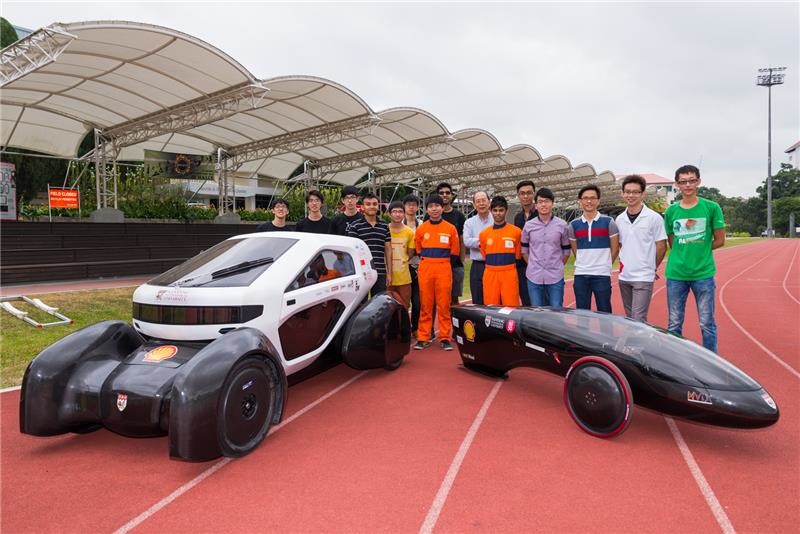
Undergraduate from the Nanyang Technological University (NTU) have pushed the limits and built the first urban electric solar car with a 3D-printed body in Singapore.
The NTU Venture 8 (NV8) solar car is a carbon fibre single shell chassis covered by 150 3D-printed parts – printing and assembly took the students 3 months to complete. It also has solar cells that can be contoured to the cars shape.
“We decided to go with a 3D-printed cabin made from lightweight plastic, as we wanted to maximise the internal space and driver’s comfort while still being able to keeping the weight to a minimum. Despite being an Urban Concept car, it is no slouch and can reach a top speed of 60km/h, while maintaining low energy consumption,” says Undergraduate Ilmi Bin Abdul Wahab, who led the development of 3D-printed NV8.
Co-designer Ng Jun Wen explained, “For it to be lightweight, thin and yet strong, we integrated a honeycomb structure and a unique joint design to hold the parts together. When seen against the light, the structure has a translucent see-through effect, like a dragonfly wing.”
NV8 will participate in the Shell Eco-marathon Asia competition at the end of this month under the Urban Concept category for fuel-efficient, roadworthy vehicles.

The students also built NTU Venture 9 (NV9), a 3 wheeled solar car/glider inspired by motorcycles. It too will feature in the Shell competition, however under the Prototype category for futuristic prototypes focused on maximising fuel efficiency through innovative design elements.
The NV9 solar car features handmade silicon cells for maximum energy harvesting and tilting. The tilting around corners, similar to a motorbike, allows for little loss in speed.
“We took the tilting mechanism inspiration from motorcycle racing, where racers would lean left or right during sharp turns to maintain their handling and speed,” said Team Manager Winston Tan. “For the car’s body, we aimed for it to be as streamlined as possible. The resulting design looks like a fusion between a F1 race car and a glider plane, with an all surround canopy for increased visual awareness.”
Both vehicles have been designed from scratch and have taken over a year to build.
